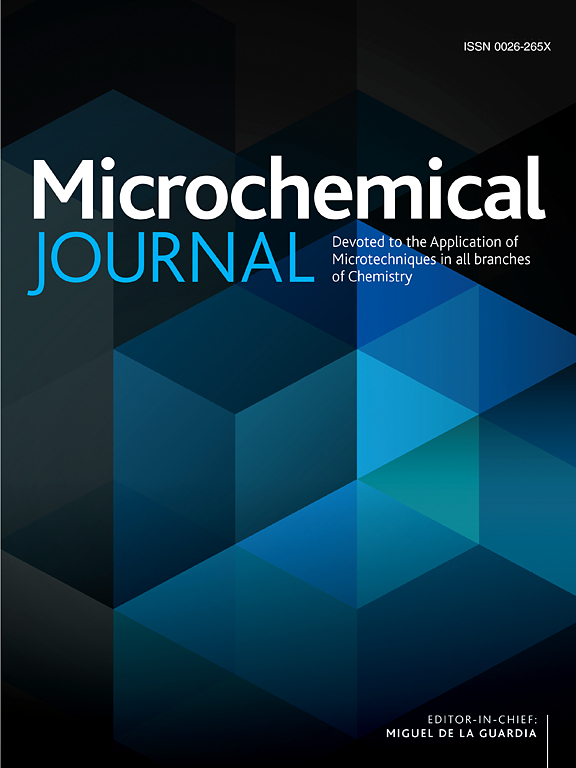Circulating tumour cells isolation in Asymmetrical meandering microchannel
IF 4.9
2区 化学
Q1 CHEMISTRY, ANALYTICAL
引用次数: 0
Abstract
A microfluidic method is presented in the current work which allows full separation of circulating tumour cells (CTCs) from the blood biopsy of cancer patients. The method is based on using a microchannel with two separation zones. The first zone is meandering and equipped with seven identical electrodes. These electrodes generate dielectrophoretic forces that affect mostly the platelets and force them to separate first in this zone. This leaves only the target cells (CTCs) with RBCs and WBCs to flow through an expanded, curved section of the channel (second zone). This unique configuration allows generating intense hydrodynamic forces that can isolate CTCs completely. A numerical model is used to give insight into the cells separation and examine the performance of the proposed channel at different operating conditions. The computational results indicated that all CTCs can be separated when operating at a blood volume flow rate ranging from 10 to 20 µl/h. The two main electrical parameters (electrode voltage and AC current frequency) are also examined. The results showed that the voltage between 15 and 30 V and frequency between 20 and 70 kHz are the best ranges to isolate pure CTCs completely without including any blood cells (i.e. 100 % both separation efficiency and purity). Further, CTCs size is changed from 12 to 26 µm to mimic the effect of different CTC types and the results demonstrate clearly that with a single design various types of cancerous cells can be handled effectively.

求助全文
约1分钟内获得全文
求助全文
来源期刊

Microchemical Journal
化学-分析化学
CiteScore
8.70
自引率
8.30%
发文量
1131
审稿时长
1.9 months
期刊介绍:
The Microchemical Journal is a peer reviewed journal devoted to all aspects and phases of analytical chemistry and chemical analysis. The Microchemical Journal publishes articles which are at the forefront of modern analytical chemistry and cover innovations in the techniques to the finest possible limits. This includes fundamental aspects, instrumentation, new developments, innovative and novel methods and applications including environmental and clinical field.
Traditional classical analytical methods such as spectrophotometry and titrimetry as well as established instrumentation methods such as flame and graphite furnace atomic absorption spectrometry, gas chromatography, and modified glassy or carbon electrode electrochemical methods will be considered, provided they show significant improvements and novelty compared to the established methods.
 求助内容:
求助内容: 应助结果提醒方式:
应助结果提醒方式:


